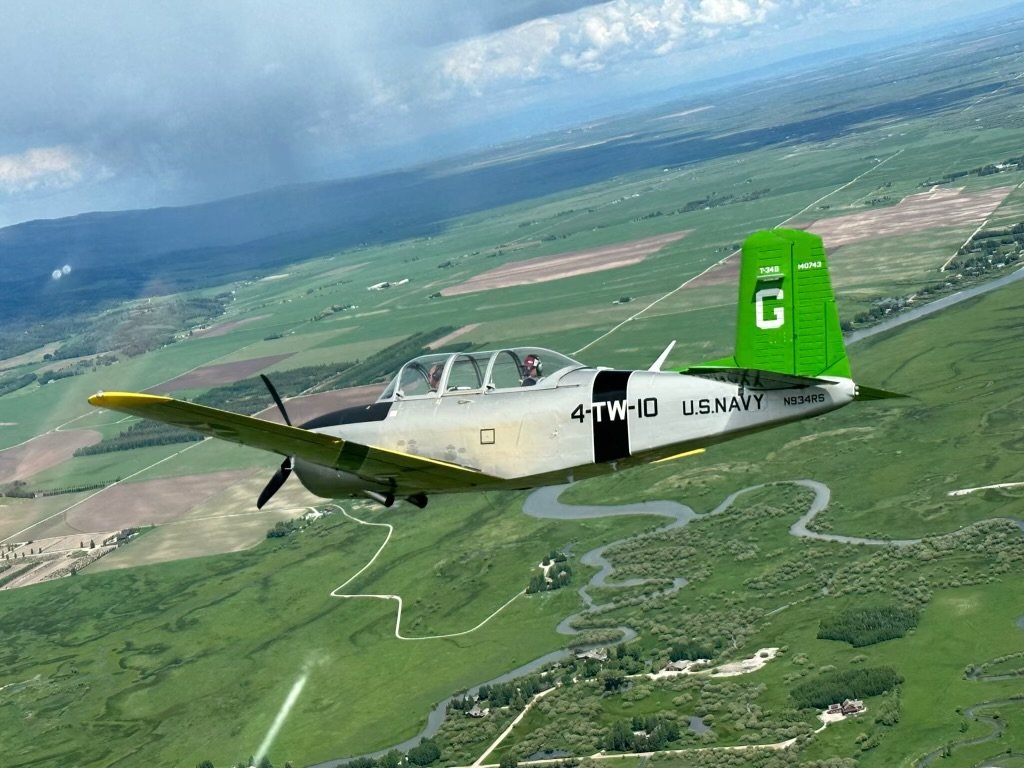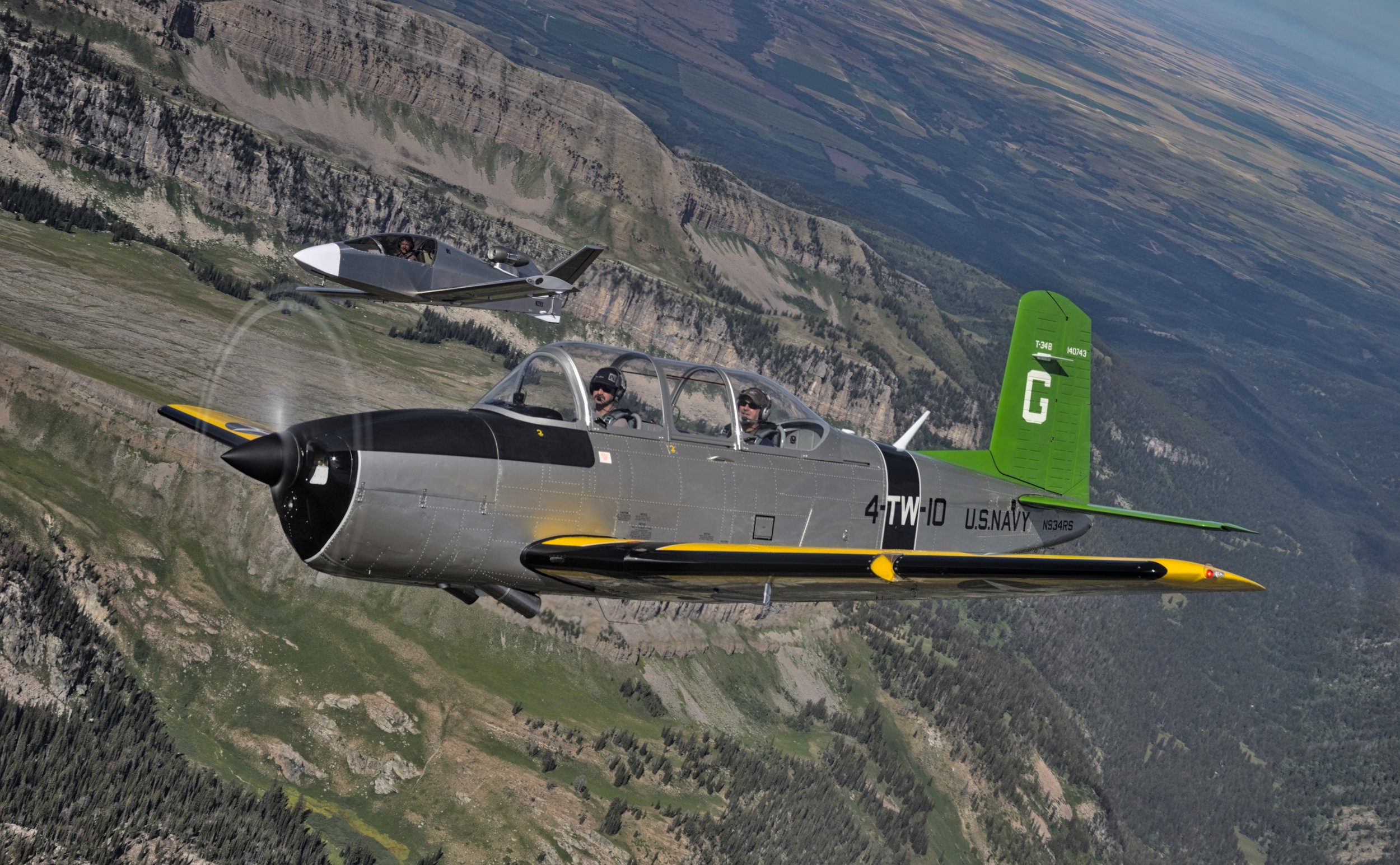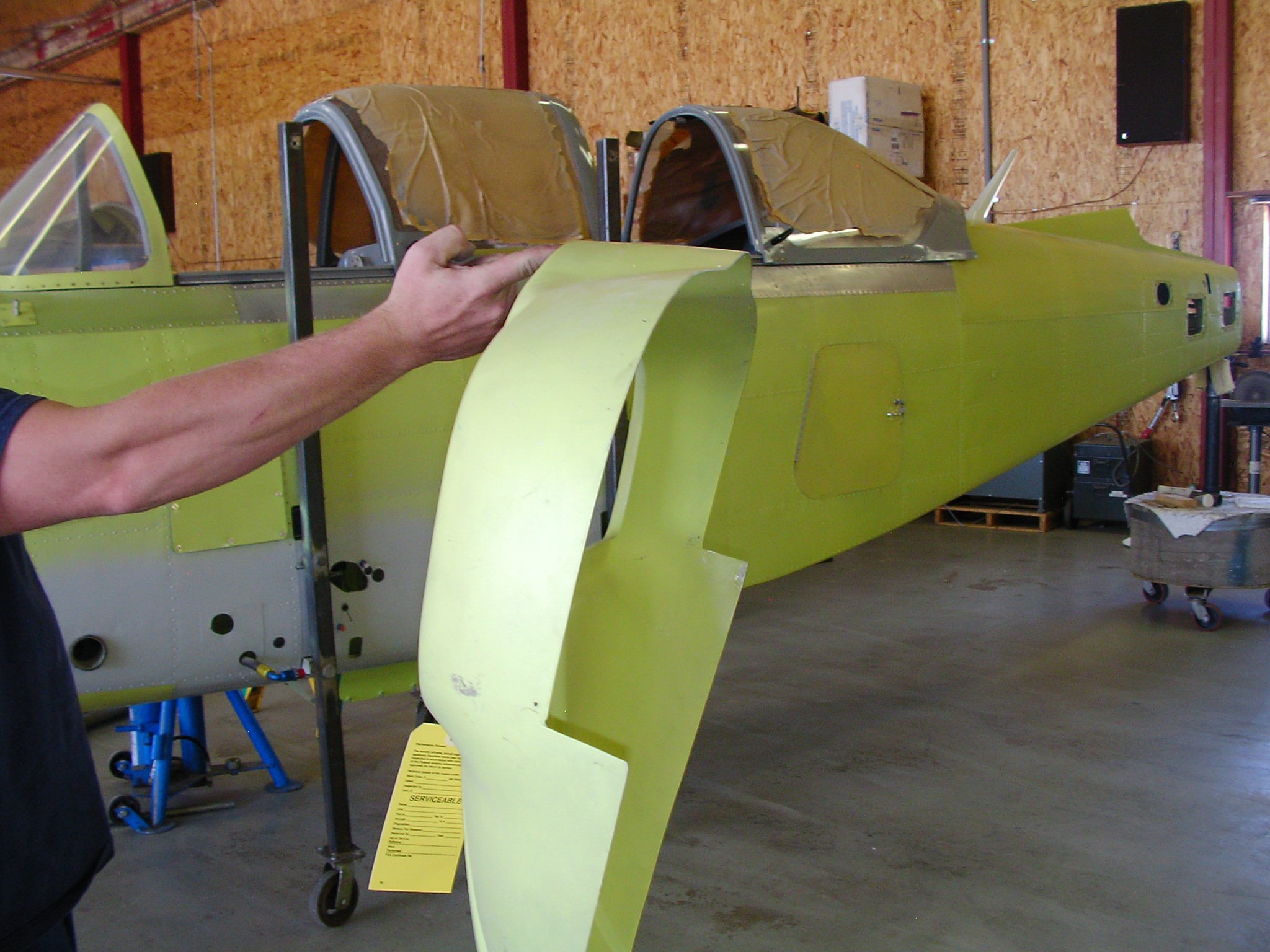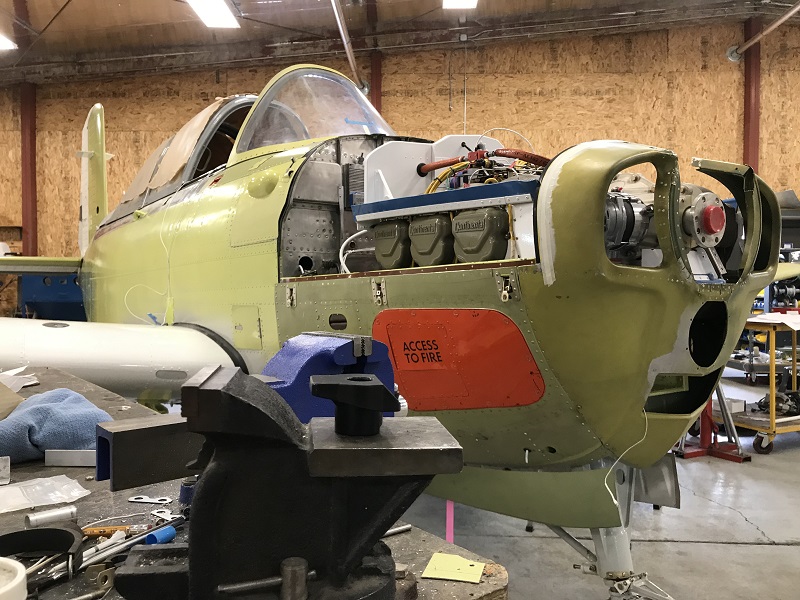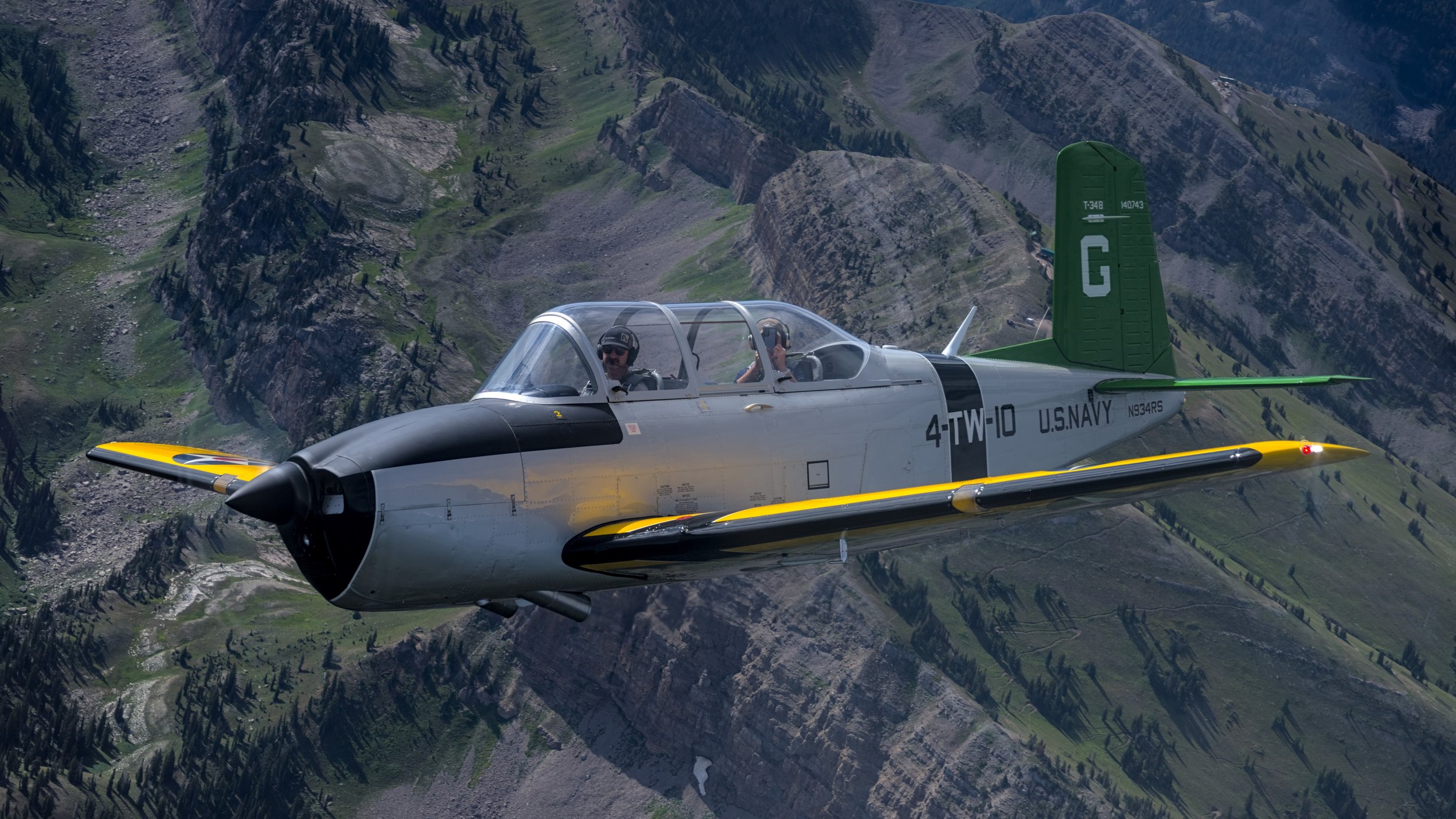
Beechcraft T-34 Mentor
The Beechcraft T-34 Mentor is a propeller-driven, single-engine, military trainer aircraft derived from the Beechcraft Model 35 Bonanza. The earlier versions of the T-34, dating from around the late 1940s to the 1950s, were piston-engine. These were eventually succeeded by the upgraded T-34C Turbo-Mentor, powered by a turboprop engine. The T-34 remains in service more than six decades after it was first designed.
The T-34 was the brainchild of Walter Beech who developed it as the Beechcraft Model 45 private venture at a time when there was no defense budget for a new trainer model. Beech hoped to sell it as an economical alternative to the North American T-6/NJ Texan, then in use by all services of the U.S. military.
Three initial design concepts were developed for the Model 45, including one with the Bonanza's signature V-tail, but the final design that emerged in 1948 incorporated conventional tail control surfaces for the benefit of the more conservative military. The Bonanza's fuselage with four-passenger cabin was replaced with a narrower fuselage incorporating a two-seater tandem cockpit and bubble canopy which provided greater visibility for the trainee pilot and flight instructor. Structurally, the Model 45 was much stronger than the Bonanza, being designed for +10g and -4.5g, while the Continental E-185 engine of 185 horsepower at takeoff (less than a third of the power of the T-6's engine) was the same as that fitted to contemporary Bonanzas.
Following the prototype were three Model A45T aircraft, the first two with the same engine as the prototype and the third with a Continental E-225 which would prove to be close to the production version. Production did not begin until 1953 when Beechcraft began delivering T-34As to the United States Air Force and similar Model B45 aircraft for export. Production of the T-34B for the United States Navy began in 1955 and this version featured a number of changes reflecting the different requirements of the two services. The T-34B had differential braking for steering control on the ground instead of nose wheel steering, additional wing dihedral, and, to cater for the different heights of pilots, adjustable rudder pedals instead of the moveable seats of the T-34A. T-34A production was completed in 1956 but T-34B production continued until October 1957. Licensed B45 versions built in Canada (125 manufactured by Canadian Car and Foundry), Japan (173 built by Fuji Heavy Industries), and Argentina (75 by FMA) continued until 1958. Beechcraft delivered the last Model B45s in 1959. Total production of the Continental-engine versions in the US and abroad was 1,904 aircraft.
from wikipedia.com
